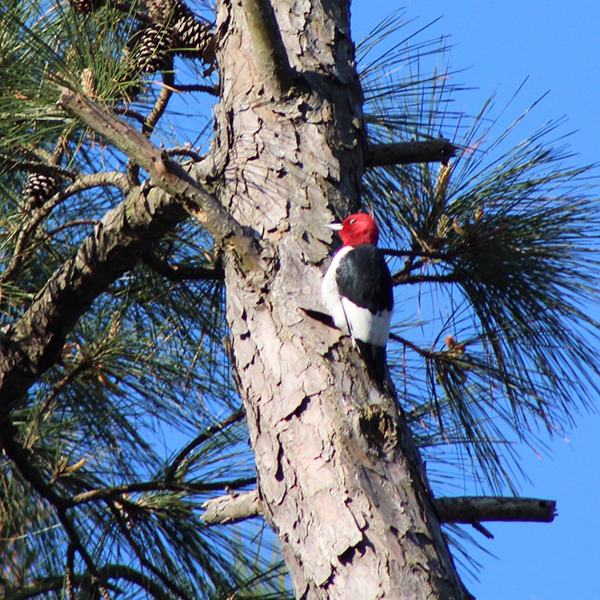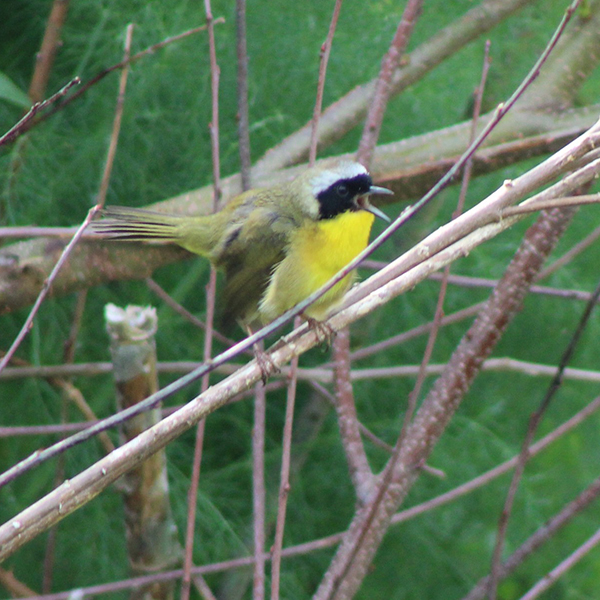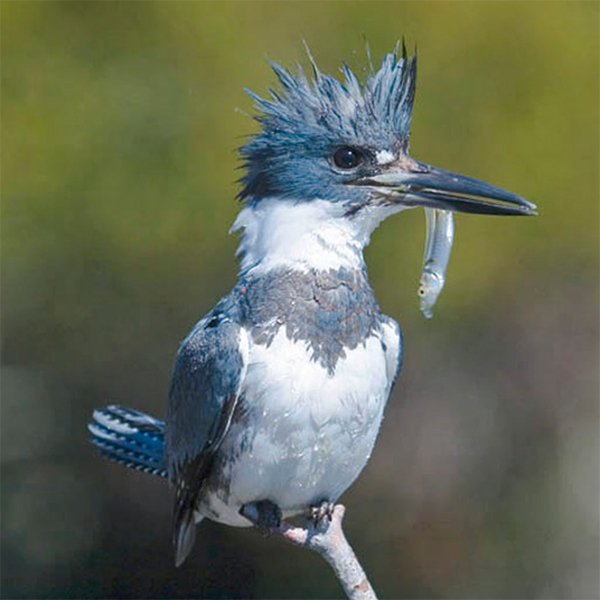Eastern Shore of Virginia National Wildlife Refuge
In Brief: Small refuge at the tip of the Delmarva Peninsula, with a geography much like that of well-known Cape May, New Jersey, and with similar concentrations of southbound migrants reluctant to fly across Chesapeake Bay. Birding productive at all seasons, but autumn has the greatest diversity and numbers by far.
Access: 32205 Seaside Road, Cape Charles, VA 23310. Open daily from dawn to dusk unless closed in October through December for hunting (call ahead to check for closures). Visitor center open on Fridays, Saturdays, and Sundays 10:00 a.m. to 2:00 p.m. Bathroom facilities in visitor center or at nearby tourism visitor center at CBBT Toll Plaza.
Telephone: 757-331-2760
Email: FW5RW_ESVNWR@fws.gov
Website: Eastern Shore of Virginia National Wildlife Refuge
Additional Info: Virginia DWR Birding Trail Site
EVERYTHING YOU NEED TO KNOW ABOUT BIRDING THE EASTERN SHORE OF VIRGINIA NATIONAL WILDLIFE REFUGE
Tricolored Heron. (All photos this page by Robert W. Schamerhorn)
Created in 1984 on the former Fort John Custis/Cape Charles Air Force Base, Eastern Shore National Wildlife Refuge protects 1127 acres at the southern tip of the Delmarva Peninsula (Wise Point), a mosaic of Loblolly Pine maritime forest, shrub-scrub habitat (managed for wildlife), and salt marshes. An excellent trail system provides access to these habitats, and an adjacent boat ramp area with brackish pond complements the refuge’s habitats. At least 407 species of bird have been recorded in the area, of a total of 439 for the entire Virginia Eastern Shore. Interpretive materials in the visitor center and on trails help the novice to learn the habitats and plants, and these are key to understanding what migrating and nesting birds might be using. The refuge website also includes an excellent checklist of birds and their status in the area week by week, plus lists of most plants on the refuge. Studying these resources will help in understanding both the species seen and those sought, on the refuge and in the county overall. Trails at the refuge are well maintained, and ticks rarely present a problem, in contrast to more primitive areas, but basic precautions are warranted (tucking pants legs into socks, spraying pants, shoes, and socks with insect repellent) during the warmer months.
FALL
The autumn months hold great promise, but the refuge follows the feast-or-famine pattern of most migratory bottlenecks at this season: after a strong cool or cold front, there can be hundreds or thousands of migrants present; during still, warm periods, only a few migratory birds might be found. Birders tend to schedule their visits for the times of bounty, understandably, but the refuge can be productive even during atmospheric doldrums. This section will describe only the parts of the refuge accessible to the public.
The key to enjoying the refuge and seeing a good diversity of species is to bird on foot for most of the time. Begin at the visitor center, checking the trees and bushes around the building for migrants (and checking the bird feeders, if they are stocked). The Butterfly Trail begins behind the building. It passes through both scrub and forested areas, both excellent for a variety of Neotropical migrants early in the autumn and for short-distance migrants later in the season. Dense tangles of vegetation and brushy areas can hold shy migrants like Worm-eating Warbler or the scarce Blue-winged and Wilson’s Warblers. Look for plants with fruit to find vireos and shy thrushes like Swainson’s and Gray-cheeked—Devil’s Walking Stick is a favorite here. Waiting patiently and unobtrusively near a fruiting plant can give birds time to get used to your presence and return to feed. A spur trail on the south side connects to a tourism visitor center with public bathrooms.
Toward the end of the trail, the habitat opens up to shrubby plants, with American Pokeweed, Eastern Redcedar, Groundsel (Baccharis hamillfolia, locally called Saltbush), Wax Myrtle, and many other shrubs are attractive to sparrows, thrasher, catbird, wrens, and warblers, especially Orange-crowned Warbler later in the autumn and through the winter. This area can be productive for sparrows, including uncommon ones: White-crowned, Lincoln’s, and even LeConte’s and Harris’s have been observed here. This is the area to watch carefully for sought-after migrants such as Golden-winged, Canada, and Connecticut Warblers.
all photos by Robert W. Schamerhorn:
Follow the main trail to a small parking area adjacent the Winslow Bunker, built in part to protect the approaches to Chesapeake Bay from enemy warships. A wooden staircase ascends the bunker, and the Wildlife Trail encircles it. Both can be productive for migrants. Trees like Black Cherry, Sassafras, American Holly, Yaupon Holly, Black Locust, Sweet Gum, and American Hackberry are all attractive to birds, and migrants often form foraging flocks with local Carolina Chickadees and Tufted Titmice in fall. Mature stands of Loblolly Pine have fewer birds but are attractive to Great Horned Owls and, during migration, other species of owls such as Long-eared, Barn, and Northern Saw-whet. A side trail ends in a marsh overlook, usually productive for a few herons, waterfowl, Clapper Rail (very vocal at dusk and often visible during the day), and occasional shorebirds such as Willet. At dusk, many American Woodcock emerge from the woods to feed in the fields; late October through winter is best to see them in numbers. Owls also come out to feed, and up to six species have been seen in a single early evening on this corner in late December. Chuck-will’s-widows can be heard from late April through July. Rarities noted in autumn in this part of the refuge include a Bell’s Vireo (18 September 2010), a Pacific-slope Flycatcher (12 November 1993), two Harris’s Sparrows (8-11 November 2003), Fulvous Whistling-Duck (20 November 1993), and multiple White-winged Doves, Swainson’s Hawks, and Sandhill Cranes.
From the parking area at the bunker, walk back along the main north-south road (Fitchetts Road, unmarked as such on the refuge, but GPS units usually name it correctly) toward the visitor center, watching the sky for raptors, a stray Sandhill Crane or American White Pelican, and other large migrants and checking the scrubby areas on both sides of the road for flycatchers and kingbirds: Western Kingbird and Ash-throated Flycatcher are very occasionally reported here, with Scissor-tailed Flycatcher and Say’s Phoebe represented by a handful of reports. Sparrows along the road can be numerous, and Clay-colored Sparrow is expected in small numbers in September and October. Patches of brushy vegetation with Smooth Sumac can hold a nice mix of migrants; stop and pish frequently if a spot seems “birdy,” as the shier and rarer birds usually seem to be the last ones to pop out. Northern Goshawk, Golden Eagle, and Rough-legged Hawk have all been seen in October/November here. If a finch irruption is underway, look and listen for siskin, goldfinch, Purple Finch, Red Crossbill (potentially three or more different call Types), White-winged Crossbill, and Evening Grosbeak.
From the visitor center, most birders then drive slowly to Ramp Lane, in the southeastern corner of the refuge. Give a wide berth to boaters coming and going along this narrow road. There is a small parking spot at the start of the road, and it’s best to park and check this immediate area for migrants before walking to the boat ramp. A small pond on the left can hold a few birds, normally waterfowl, larger shorebirds, herons, ibises (once a White-faced Ibis; often flocks of White Ibis). The salt marshes have dozens of pairs of Clapper Rail, which are most easily seen from the boat ramp area on the far side of the channel. Gulls, terns, and ducks are present year-round near the boat ramp, and the later autumn and winter months can be good times to see Saltmarsh and Nelson’s (less often Seaside) Sparrows in the marsh grasses. These species respond to pishing during migration but not at all in winter. There are no poisonous snakes on the refuge, so that is not a concern for birders who might like to get a few steps “into” the habitat. From about 3:00 p.m. until dusk in August and September, the boat ramp is a perfect location for observing the “sky traffic” at the tip of the peninsula, not just raptors like Bald Eagles and Ospreys but often hundreds of herons and egrets transiting to Fisherman Island to roost. Shorebird flocks can also be seen making the crossing to barrier islands from high-tide roosts. Post-hurricane watches here have turned up little other than Magnificent Frigatebird.
American Woodcock.
A final option for birding from the refuge is to walk (or bike) along the new Southern Tip Bike & Hike Trail, which starts at a small parking lot just north of the visitor center and parallels Route 13 for almost 3 miles. Birders have not spent much time on this trail, but it passes through several patches of interesting habitat and could certainly produce notable land birds if checked regularly. A Mountain Bluebird was found 27 November 2004 just north of the refuge, on the Seaside Road.
WINTER
Good winter birding at the refuge involves essentially the same set of trail loops as in fall, though there will be fewer species to see, no matter how much effort is expended. Sparrows dominate the scrub-shrub areas, and in the evening, dozens of American Woodcock materialize to hunt for earthworms in open habitats. Small associations of Eastern Bluebirds, Pine Warblers, Yellow-rumped Warblers, and Chipping Sparrows often forage along roadsides, as they do throughout the Eastern Shore in winter, sometimes joined by Dark-eyed Juncos and other sparrows. The Butterfly Trail often has a lingering or uncommon bird somewhere along it: Gray Catbird, Baltimore Oriole, Western Tanager, Dickcissel, Orange-crowned Warbler, Nashville Warbler, and Wilson’s Warbler have all been recorded into early January. House Wren is numerous in these habitats throughout the refuge, and the occasional Eastern Towhee or Brown Thrasher usually pops up somewhere. Checking the boat ramp/pond and marsh overlook areas can add dozens of birds to the list, mostly waterfowl and perhaps a Clapper Rail. The waterway south of the boat ramp usually has a single Common Goldeneye in winter, a scarce bird in the Although the Christmas Bird Count often turns up a rarity or two in late December, January and February can be comparatively quiet, as most birds have settled into their wintering areas. Flocks of geese sometimes transit the refuge but do not usually linger, as there is no good habitat on the refuge proper except for Brant, sometimes present in small numbers. A Ferruginous Hawk discovered here in January 1995 spent the rest of the winter in the area, so it pays to check each raptor carefully for vagrants and uncommon species such as Rough-legged Hawk, rarely seen hunting out over the marshes here. Evening offers the possibility of owls, though most visits turn up only the expected Great Horned Owl and Eastern Screech-Owl. Northern Saw-whet Owls do winter here, but they are remarkably difficult to locate. Watch over open marshlands at dusk for Short-eared Owls, now quite rare as wintering birds in this area.
SPRING
Frequent spring visits to the refuge’s habitats by local birders, who check trails, marshes, and the pond (and also the refuge headquarters area), have turned up a surprising variety of Neotropical migrants, though most species’ spring migration routes lie west of Chesapeake Bay. Cape May, Blackburnian, Chestnut-sided, and Magnolia Warblers turn up almost annually in May, though usually just one of each, with Blackburnian frequenting pines, Magnolia the hollies, the others more drawn to flowering cherry trees. More regular but still very scare are Black-throated Green and Blue-winged Warblers, normally earlier in the season. Black-throated Green is usually in pines, Blue-winged in vine tangles or heavy brush at forest edge. Most of these warblers sing at least occasionally, though often quietly, in spring here.
On rare occasions, harsh weather systems have pushed migrants toward the coast, as on 10 May 2002, when three Lincoln’s Sparrows were found singing at the end of the Butterfly Trail after a westerly blow overnight. The spring arrival timing of migratory species that nest on the refuge—Common Yellowthroat, Indigo Bunting, Orchard Oriole, Blue Grosbeak, Yellow-billed Cuckoo, Summer Tanager, Prairie Warbler, Yellow-breasted Chat—is typically later than in, for instance, Suffolk, Virginia, even later by 10-12 days. It is speculated that some of these birds arrive by flying southward down the Delmarva Peninsula, rather than crossing the bay from southeastern Virginia. Listen for less-common nesting species such as Eastern Wood-Pewee, Acadian Flycatcher (not annual), and Yellow-throated Warbler, the latter two mostly nesting in warm, wet spring seasons around the Winslow Bunker. Chuck-will’s-widows nest in the pine woods, but most territories are in restricted areas near Wise Point itself. Migrant Eastern Whip-poor-wills have been detected several times in spring, albeit in restricted parts of the refuge. Late in the spring, listen for Mourning Warbler, documented twice in mid-May (1999, 2001) near the bunker; they prefer dense thickets of Rubus. In the 1960s and 1970s, Monk Parakeets nested in the eastern part of the refuge, but they have not been reported since 1981 here.
Lucky birders might hear the few Northern Bobwhite that make the refuge home; the species is in rapid decline across the state, but a few coveys still hang on in protected areas. Wild Turkeys, reintroduced to the area in the early 1990s, are now a fairly common sight, and gobbling is heard around the refuge in April and May. Warm fronts in the spring (even in March) can bring Swallow-tailed Kites into the area; often the best strategy to find one on the refuge is to wait until the winds turn northward again, then check the entire southern tip of the peninsula for birds that have drifted southward. In May and June, Mississippi Kites have become more regular, if still not reliable, on the refuge and along the Seaside Road (Route 600) and its side roads. Most of the kites in spring time are one-year-old birds rather than adults, but breeding is possible by Mississippi Kites, which nest annually in Virginia Beach.
SUMMER
The warmest months see very little birding activity at the refuge, where nesting species dominate the checklist. The refuge is certainly worth checking, but a full loop of trails will probably turn up mostly the same birds as detected from the roadsides. By July, shorebirds are returning southward, but the refuge tends not to be an ideal place to study them, with the exception of a few yellowlegs and Willets. For the especially avid, early migrating warbler species such as Louisiana and Northern Waterthrushes, Black-and-white Warbler, and even the rare Cerulean Warbler, could be sought in August. With global warming, more and more southerly species have been detected north of their usual ranges, particularly in summer, and birds like Wood Stork, Roseate Spoonbill, and Reddish Egret should be kept in mind when looking over the marshes and pond at the refuge. Summer is a good season for seeing reptiles here, and though there are no specialty species found here, the boat ramp area can be a good place to see Diamondback Terrapin.





